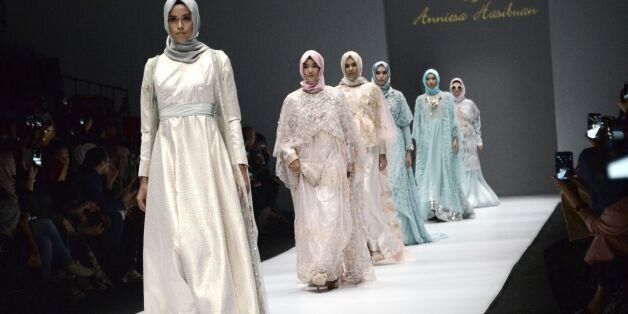
The modest silhouette continues to gain momentum with influencers, international runways and global brands. The impact of social media is undeniable and the access this brings to millennial influencers has changed the way the world operates. The simple act of sharing images of their lives and modest ensembles, on their blogs and social media, has given the world access to an otherwise unknown within the world of fashion. The question on the mind of many, from advocates for the modest movement, to those who critique it is: is modest fashion a fleeting trend or a permanent shift in the sartorial world?
Modest fashion started to gain media attention several years ago with the rise of the millennial bloggers who - for the most part - sought to use social media as a creative outlet. On demonstrating that dressing conservatively could coincide with being on trend, they have subverted the notion that modest dressing is at odds with being fashionable. For many women seeking modest yet trendy clothing, the lack of availability of such clothing has made it difficult to put together outfits that would not compromise on either. Fashion influencers such as Dian Pelangi and Ascia Akf who have garnered over a million followers on social media, provide direction for these women, showing them how to mix and match high street clothing in innovative ways. For instance, by pairing long-sleeved tops with sleeveless dresses, or wearing kimonos over straight-cut jeans, they're indulging in fashion without sacrificing their values. On speaking to Haute Elan, Canadian blogger Hanan Tehaili, said that "Modest fashion is a way of expressing your style parallel to your way of life. It is beautiful because of the varying styles and beliefs that are intertwined to create this phenomenon."
While people can be quick to make the assumption that women who choose to cover themselves do so due to social, cultural or religious pressure, social media provides women with a platform that has demonstrated quite the contrary. On partaking in a recent campaign with YouTube, hijab-wearing British YouTuber Dina Tokio, brought to light the way the platform is 'made for breaking stereotypes.' Arguably, the modest fashion movement has further provided an opportunity to empower all women, marking a shift away from the sexualisation of the female form, while in turn, personifying it.
These young tech-savvy women who are influenced by mainstream fashion are not a niche community; they will emerge as one of the biggest global communities of women, driven largely by high Muslim population growth. According to Pew Research, Muslims will shortly grow to approximately 2 billion of our global population and by 2030 will become nearly 30% of the global population, with over 50% of them under the age of 30. Although Muslims form the majority of the modest dressing community, there are many other groups of women outside the Muslim population that also dress conservatively. Without a doubt, it is a global market that is largely underserved. Platforms like Haute Elan and Hijup cite the lack of an ample product offering as the only constraint to their visitor growth. While global interest in the platforms continues to grow, supply must meet demand if modest fashion is to expand.
The rise of modest fashion has resulted in an increase in awareness that women don't need to be 'sexy' and naked to be considered attractive; this is impacting and creating an evolution of the global fashion scene. Modest trends include palazzo pants, long-line shirts and long tunics - items that continue to dominate runways and collections season after season. While bloggers may have forged the path towards a reinvention in the way we perceive fashion, designers have been unsurprisingly delivering on this shift. Just last year, Dolce and Gabbana launched a collection of luxury hijabs (headscarves) and abayas (full-length, loose dresses), tapping into the Muslim market. High street brands have also acknowledged the billion-dollar market, with H&M collaborating with Dina Tokio, and featuring Mariah Idrissi in a recent campaign. New York Fashion Week SS/17 saw Indonesian designer Anniesa Hasibuan receive international acclaim for being the first designer to present a collection which featured models wearing hijabs with each outfit.
Arguably, the high street has been slow in catering directly to the modest market, allowing the flourishing community of modest fashion entrepreneurs to break into the market. As a movement that is inspired by the inherent values held by conservative Muslims, Jews and Christians alike, it's rooted in an entire system of values. For Saima Khan, a modest fashion influencer: "Modest fashion is the way you carry yourself. It is a movement that allows you to express who you are and what you stand for. It is a form of expression based on the individual's religious and cultural values."
Although styles will shift, we can be sure that the modest silhouette will remain. The real question is; how long will it take for everyone to realise?
Multi-brand e-commerce platform, Haute Elan, sought to make modest fashion more easily accessible. Founded in 2012, the company houses over 200 designers and ships to over 220 countries. They are set to host the inaugural London Modest Fashion Week at the Saatchi Gallery, Chelsea, London, on 18th and 19th February, which will bring together designers from across the globe and local and international bloggers alike.
